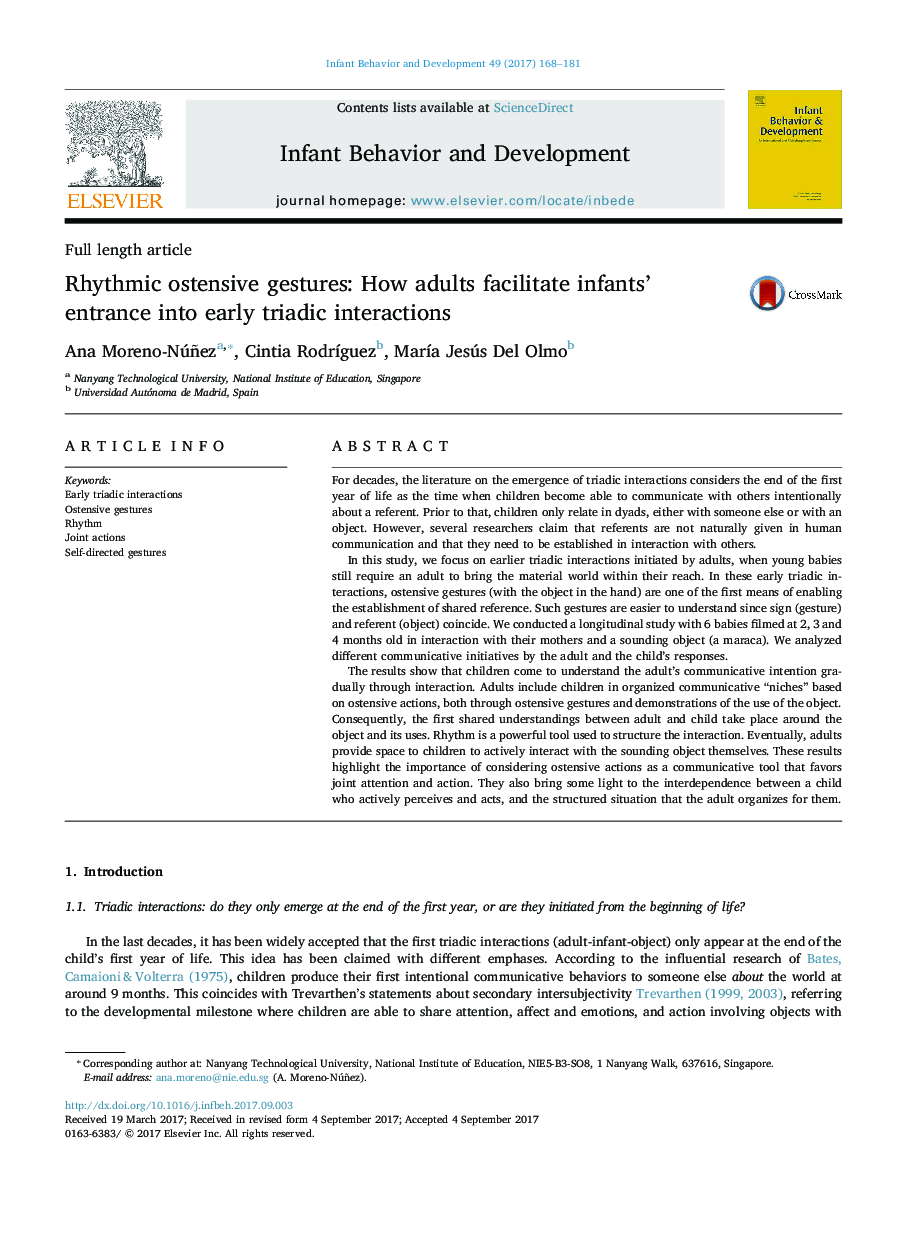| کد مقاله | کد نشریه | سال انتشار | مقاله انگلیسی | نسخه تمام متن |
|---|---|---|---|---|
| 5039766 | 1473413 | 2017 | 14 صفحه PDF | دانلود رایگان |

- Children do not suddenly understand adult's communicative intention.
- Adults gradually include babies in communicative niches through ostensive actions.
- First agreements between adult and child take place around the object and its uses.
- Rhythm is a powerful tool to structure the interaction.
- Ostensive actions are a communicative tool that favors joint attention and action.
For decades, the literature on the emergence of triadic interactions considers the end of the first year of life as the time when children become able to communicate with others intentionally about a referent. Prior to that, children only relate in dyads, either with someone else or with an object. However, several researchers claim that referents are not naturally given in human communication and that they need to be established in interaction with others.In this study, we focus on earlier triadic interactions initiated by adults, when young babies still require an adult to bring the material world within their reach. In these early triadic interactions, ostensive gestures (with the object in the hand) are one of the first means of enabling the establishment of shared reference. Such gestures are easier to understand since sign (gesture) and referent (object) coincide. We conducted a longitudinal study with 6 babies filmed at 2, 3 and 4 months old in interaction with their mothers and a sounding object (a maraca). We analyzed different communicative initiatives by the adult and the child's responses.The results show that children come to understand the adult's communicative intention gradually through interaction. Adults include children in organized communicative “niches” based on ostensive actions, both through ostensive gestures and demonstrations of the use of the object. Consequently, the first shared understandings between adult and child take place around the object and its uses. Rhythm is a powerful tool used to structure the interaction. Eventually, adults provide space to children to actively interact with the sounding object themselves. These results highlight the importance of considering ostensive actions as a communicative tool that favors joint attention and action. They also bring some light to the interdependence between a child who actively perceives and acts, and the structured situation that the adult organizes for them.
Journal: Infant Behavior and Development - Volume 49, November 2017, Pages 168-181